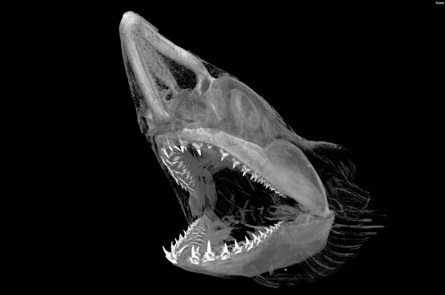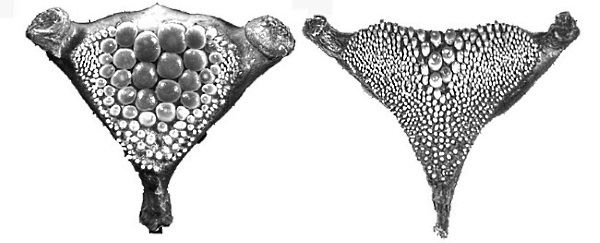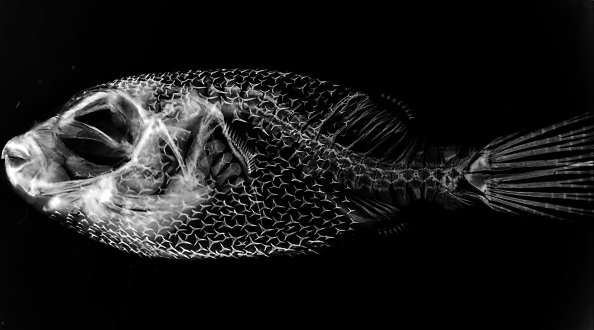SICB Annual Meeting 2020
January 3-7, 2020
Austin, TX
Symposium S3: Biology at the Cusp: Teeth as a Model Phenotype for Integrating Developmental Genomics, Biomechanics, and Ecology
Our highly integrative symposium will center around the comparative anatomy, development, biomechanics, and ecology of teeth. The presentations in the symposium will highlight how teeth provide a powerful phenotype for integrating across biological disciplines ranging from ecology to genomics. For instance, teeth are used to identify extant and fossil species, to document ancient as well as recent ecologies, and to understand tissue, cell, and gene interactions. Because human and teleost fish teeth are homologous and derived from mineralized tooth-like structures present in a common early vertebrate ancestor, teeth provide an ideal organ system for determining how multiple levels of biological complexity have comparatively contributed to vertebrate diversification. Additionally, since a wide array of serially homologous but differentiated tooth phenotypes can co-occur within the same trophic apparatus, we can also assess how independent mechanisms of tooth formation contribute to differentiation within the same individual organism. Furthermore, because well-studied mammalian dentitions represent only a small subset of vertebrate dental diversity, comparative studies in new vertebrate models will continue to provide insights into the mechanisms structuring dental diversification.
Teeth have long been a subject of integrative inquiry, but the breadth of studies on teeth is increasing at an exceptional rate. Our understanding of the genomic basis of tooth differentiation is rapidly increasing as non-tradiational vertebrate model systems become tractable to genetic dissection. With our expanding knowledge of vertebrate genomics, more and more systems have become amenable to methods for robustly evaluating gene expression such as in situ hybridization and RNAseq. Concordantly, our appreciation of the biomechanical consequences of tooth shape and structure are being explored in ways that were recently unimaginable due to the ongoing revolutions in capturing the 3D structure of teeth as well as the increased application of modeling approaches to understanding functional attributes of teeth and their emergent dentions. Synthesizing the rapidly accruing knowledge we are gaining in these fields promises to provide novel integrative insights into a key vertebrate phenotype.
Sponsors: SICB Co-Sponsoring Divisions DCB, DEDB, DEE, DVM
Organizers
- Gareth Fraser
- Darrin Hulsey
Speakers
S3-1 Saturday, Jan. 4, 08:00 HULSEY, CD:
The evolutionary developmental genetics of vertebrate tooth size
S3-2 Saturday, Jan. 4, 08:30 MILLER, CT:
Developmental Genetic Analysis of Tooth Number Variation in Sticklebacks
S3-3 Saturday, Jan. 4, 09:00 COHEN, K.E*; WELLER, H.I; SUMMERS, A.P:
What is homodonty?
S3-4 Saturday, Jan. 4, 10:00 BRINK, KS*; CHUONG, CM; WU, P; RICHMAN, J:
Effects of Premature Tooth Extraction on Tooth Replacement Rates in Iguana iguana
S3-5 Saturday, Jan. 4, 10:30 CROFTS, SB*; SMITH, SM; ANDERSON, PLS; CROFTS, Stephanie:
Crushing and puncturing: biomechanics of tooth shape
S3-6 Saturday, Jan. 4, 11:00 KARAGIC, N*; MEYER, A; HULSEY, CD:
Plasticity of Vertebrate Dentition
S3-7 Saturday, Jan. 4, 11:30 TUCKER, A. S.:
Developmental basis of tooth regeneration
S3-8 Saturday, Jan. 4, 13:30 JOHANSON, Z*; UNDERWOOD, C; MANZANARES, E; FERNANDEZ, V; CLARK, B; SMITH, M:
Evolution of the Dentition in Sharks
S3-9 Saturday, Jan. 4, 14:00 BHULLAR, B.-A.S.*; MANAFZADEH, A.R.; MIYAMAE, J.A.; HOFFMAN, E.A.; BRAINERD, E.L.; MUSINSKY, C.; CROMPTON, A.W.:
The origin of chewing in mammals required rolling of the jaw and involved broad continuity in molar form and function
S3-10 Saturday, Jan. 4, 14:30 SADIER, A*; DESSALES, R; SANTANA, S; SEARS, K:
Finding new rules for the patterning and shape of mammalian dentition: insights from Noctilionoid bats
S3-11 Saturday, Jan. 4, 15:00 FRASER, GJ*; THIERY , A; MARTIN, KJ; JAMES, K; COOPER, RL; HOWITT, C; JOHANSON, Z:






